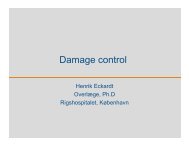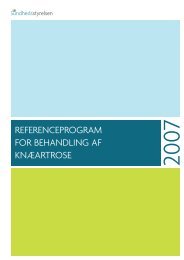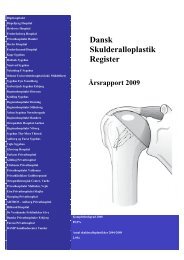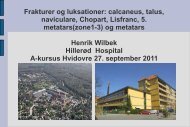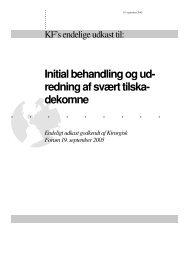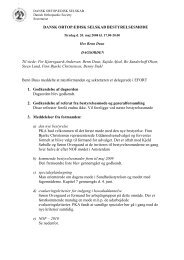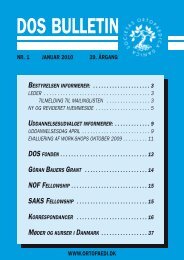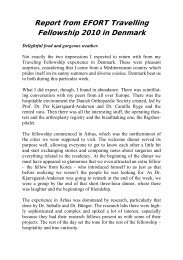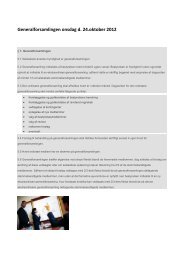DOS BULLETIN - Dansk Ortopædisk Selskab
DOS BULLETIN - Dansk Ortopædisk Selskab
DOS BULLETIN - Dansk Ortopædisk Selskab
Create successful ePaper yourself
Turn your PDF publications into a flip-book with our unique Google optimized e-Paper software.
2010-378_<strong>DOS</strong> nr. 3 2010 29/09/10 10:08 Side 117<br />
A novel method for measuring the femoral<br />
neck anteversion<br />
Tommy Hemmert Olesen, Trine Torfing, Søren Overgaard<br />
Department of Radiology & Department of Orthopaedics and<br />
Traumatology, Odense University Hospital<br />
Background: Several methods exist for measuring femoral neck anteversion<br />
angle (FNAA) using CT-scans. A common problem is how to<br />
realign femur prior to actual measurement. Proposed methods in the literature<br />
are too complex for the clinical setting or differ widely in their<br />
definition of FNAA. There is no consensus as to which method is best.<br />
In this study a method is proposed, that is a modernization of Murphy et<br />
al's original work on the subject.<br />
Purpose: To compare two methods of measuring FNAA: The method<br />
used at Odense University Hospital until recently (2D-OUH), and a new<br />
method, 3D-OUH, which realigns femur prior to measurement.<br />
Methods: 26 CT-scanned patients: 9 men and 17 women aged 12 to 64<br />
with a mean age of 37 years. The right side FNAA was measured twice<br />
with each method by one observer, measuring intraobserver variability.<br />
Both methods are based on the following anatomy: Femoral head center,<br />
center at level of lesser trochanter, posterior apex of the femoral<br />
condyles. The 3D-OUH method measures FNAA relatively to anatomy<br />
of femur itself, instead of the horizontal plane of the CT-scanner as with<br />
the 2D-OUH method. The intercondylary notch center of the knee and<br />
center at lesser trochanter is used in realignment.<br />
Findings: 2DOUH significantly overestimated AV compared to<br />
3DOUH by 4.2° (95 % CI: 2.8°;5.7°), P=0.00. The 3DOUH method had<br />
a lower variability with a Limit of agreement (LOA) of -2.1° to 2.4°<br />
against that of 2DOUH of -3.4° to 3.8°<br />
Conclusion: Measurements made with the 3D-OUH method was significantly<br />
lower than with 2D-OUH, implying systematic bias from the way<br />
patients are positioned in the scanner. The 3D-OUH method had lower<br />
intra-observer variability. Compared to the 2D-OUH method, it is more<br />
precise, estimated by intra-observer variability alone.<br />
117



